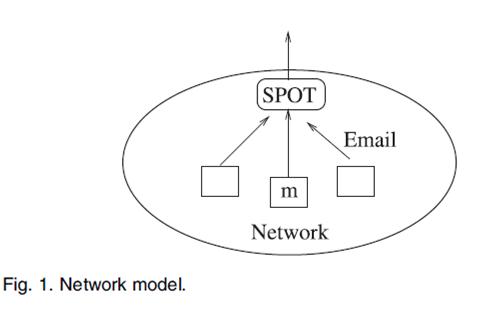A
Distributed Control Law for Load Balancing in Content Delivery Networks
ABSTRACT:
In this paper,
we face the challenging issue of defining and implementing an effective law for
load balancing in Content Delivery Networks (CDNs). We base our proposal on a
formal study of a CDN system, carried out through the exploitation of a fluid
flow model characterization of the network of servers. Starting from such
characterization, we derive and prove a lemma about the network queues
equilibrium. This result is then leveraged in order to devise a novel
distributed and time-continuous algorithm for load balancing, which is also
reformulated in a time-discrete version. The discrete formulation of the
proposed balancing law is eventually discussed in terms of its actual
implementation in a real-world scenario. Finally, the overall approach is
validated by means of simulations.
EXISTING SYSTEM:
In a queue-adjustment strategy, the
scheduler is located after the queue and just before the server. The scheduler
might assign the request pulled out from the queue to either the local server or
a remote server depending on the status of the system queues.
In a rate-adjustment model, instead the
scheduler is located just before the local queue: Upon arrival of a new request,
the scheduler decides whether to assign it to the local queue or send it to a
remote server.
In a
hybrid-adjustment strategy for load balancing, the scheduler is allowed to
control both the incoming request rate at a node and the local queue length.
Thus in
Existing systems, Upon arrival of a new request, indeed, a CDN server can
either elaborate locally the request or redirect it to other servers according
to a certain decision rule, which is based on the state information exchanged
by the servers. Such an approach limits state exchanging overhead to just local
servers.
DISADVANTAGES OF EXISTINGS SYSTEM:
A critical component of CDN architecture
is the request routing mechanism. It allows to direct users’ requests for content
to the appropriate server based on a specified set of parameters. The proximity
principle, by means of which a request is always served by the server that is
closest to the client, can sometimes fail. Indeed, the routing process
associated with a request might take into account several parameters (like
traffic load, bandwidth, and servers’ computational capabilities) in order to
provide the best performance in terms of time of service, delay, etc.
Furthermore, an effective request routing mechanism should be able to face
temporary, and potentially localized, high request rates (the so-called flash
crowds) in order to avoid affecting the quality of service perceived by other
users.
PROPOSED SYSTEM:
In a similar
way, in this paper we first design a suitable load-balancing law that assures
equilibrium of the queues in a balanced CDN by using a fluid flow model for the
network of servers. Then, we discuss the most notable implementation issues
associated with the proposed load-balancing strategy.
We present a
new mechanism for redirecting incoming client requests to the most appropriate
server, thus balancing the overall system requests load. Our mechanism
leverages local balancing in order to achieve global balancing. This is carried
out through a periodic interaction among the system nodes.
ADVANTAGES OF PROPOSED SYSTEM:
The quality of our solution can be
further appreciated by analyzing the performance parameters
The proposed mechanism also exhibits an
excellent average Response Time, which is only comparable to the value obtained
by the 2RC algorithm.
The excellent performance of our
mechanism might be paid in terms of a significant number of redirections. Since
the redirection process is common to all the algorithms analyzed, we exclusively
evaluate the percentage of requests redirected more than once over the total
number of requests generated.
ALGORITHM USED:
DISTRIBUTED LOAD-BALANCING ALGORITHM
SYSTEM CONFIGURATION:-
HARDWARE REQUIREMENTS:-
ü Processor - Pentium –IV
ü Speed - 1.1 Ghz
ü RAM - 512 MB(min)
ü Hard
Disk - 40 GB
ü Key
Board - Standard Windows Keyboard
ü Mouse - Two or Three Button Mouse
ü Monitor - LCD/LED
SOFTWARE
REQUIREMENTS:
•
Operating system : Windows XP.
•
Coding Language : C#.Net.
•
Data Base : SQL Server 2005
•
Tool : VISUAL STUDIO 2008.
REFERENCE:
Sabato Manfredi, Francesco
Oliviero, and Simon Pietro Romano,“A Distributed Control
Law for Load Balancing in Content Delivery Networks”, IEEE/ACM TRANSACTIONS
ON NETWORKING, VOL. 21, NO. 1, FEBRUARY 2013.





